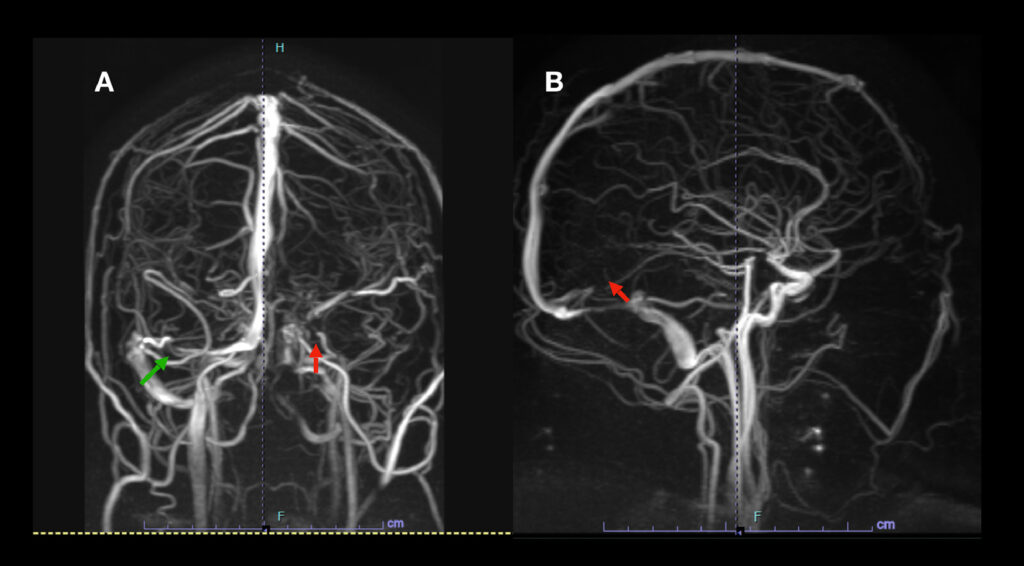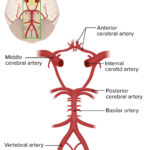Cerebral thromboembolism, a condition marked by the obstruction of cerebral arteries by a blood clot, poses significant risks for severe neurological damage. Effective prevention is essential to reduce the incidence of stroke and its debilitating consequences. This article delves into evidence-based strategies for preventing cerebral thromboembolism, covering risk factors, diagnostic approaches, and management strategies.

Understanding Cerebral Thromboembolism
Cerebral thromboembolism occurs when a thrombus (blood clot) forms and detaches, traveling through the bloodstream until it obstructs a cerebral artery. This blockage disrupts blood flow to the brain, leading to ischemic stroke. Immediate action and preventive measures are vital to minimize long-term impacts.
Key Risk Factors
- Atrial Fibrillation (AF): This irregular heart rhythm increases clot formation in the heart, which can travel to the brain.
- Hypertension: High blood pressure weakens and damages blood vessels, fostering clot formation.
- Diabetes Mellitus: Elevated blood sugar levels contribute to vascular damage and increased thrombotic risk.
- Hyperlipidemia: High cholesterol levels promote atherosclerosis, a precursor to thromboembolic events.
- Sedentary Lifestyle: Reduced activity levels slow circulation, increasing the likelihood of clot formation.
- Smoking: Tobacco use damages vascular endothelium and enhances clotting mechanisms.
Strategies for Prevention
1. Medical Management
Anticoagulants and Antiplatelets
- Direct Oral Anticoagulants (DOACs): Rivaroxaban and apixaban are effective in reducing stroke risk in patients with AF.
- Warfarin: This traditional anticoagulant remains an option for patients with specific indications.
- Aspirin: Low-dose aspirin may be prescribed to prevent platelet aggregation in high-risk individuals.
Blood Pressure Control
- Maintain systolic blood pressure below 130 mmHg through medications such as ACE inhibitors, beta-blockers, or calcium channel blockers.
Lipid-Lowering Therapy
- Statins are the cornerstone for managing hyperlipidemia, reducing plaque formation and embolic risk.
2. Lifestyle Modifications
Regular Physical Activity
- Engage in at least 150 minutes of moderate aerobic exercise weekly to enhance circulation and cardiovascular health.
Healthy Diet
- Follow a Mediterranean or DASH diet, rich in vegetables, fruits, whole grains, and healthy fats to reduce systemic inflammation.
Smoking Cessation
- Seek professional guidance or cessation programs to eliminate tobacco use and its harmful vascular effects.
3. Surgical Interventions
- Carotid Endarterectomy: Removal of plaques from the carotid artery to prevent embolic stroke.
- Left Atrial Appendage Closure: A procedure for AF patients to reduce clot formation in the atrial appendage.
Importance of Early Diagnosis
Diagnostic Approaches
- Imaging Techniques: MRI and CT scans detect cerebral ischemia and thrombotic events.
- Transesophageal Echocardiogram (TEE): Identifies cardiac sources of emboli.
- Blood Tests: Assess cholesterol levels, coagulation profiles, and inflammatory markers.
Warning Signs
- Sudden numbness or weakness on one side of the body.
- Difficulty speaking or understanding speech.
- Severe headache without a known cause.
- Sudden vision loss or disturbances.
Monitoring and Follow-Up
Consistent follow-up with healthcare providers ensures the effectiveness of preventive measures. Regular monitoring of blood pressure, cholesterol levels, and adherence to prescribed medications is crucial to mitigate risks.

